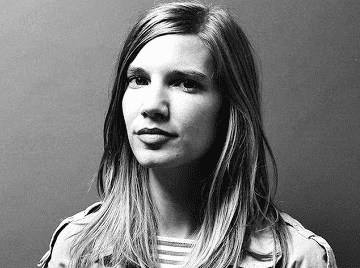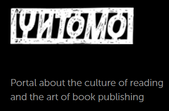FOREWORD. As I’m writing this, I’m sitting on a plane, where screens in the backs of seats compete with screens in hands. A plane was once a quiet place for reading or dozing, a liminal space where conversations among strangers were somehow permitted, and—because of the improbability of seatmates meeting again—might grow probing and intimate. A plane, then, was sometimes a place of reflection, of connection. And perhaps sometimes it still is. But all I see today are screens, screens, screens.
1. Poetry is not a frippery. It’s a useful—even utilitarian—salve for what ails us. It is not the right salve for everyone, but it’s right for some, and at times in its history, for very many. If it’s right for you, you will know it. When you hear the right poem, you will feel its rightness.
2. I was just at a conference in England, where a woman who’d arrived to hear a talk on the Russian poet Ivanov told this story. I have been reading Ivanov, she said, since his works first became available in Russia. They were offered in a beautiful three-volume set. I could not afford it. At the time I was poor as a church mouse. I had a leather skirt, which I sold to buy the books. You, she said to the men giving the talk, would perhaps not be able to imagine what it was like to be a woman in Moscow in the 90s, and to have a leather skirt, and to sell it to buy three volumes of poetry. But you—and here she turned towards me--might.
3. Poetry is a dynamic form. We identify it with formal structures—rhyme and meter and metaphor—but it does not require them. As quickly as it presents those structures, it invites its user, the writer, to abandon them. Its structures are as often ghosts that hover around a poem as scaffolding that holds it up. Poetry can carry its history so lightly a listener can hardly perceive it, or can wield that history as a handsome weight. It is that muscular: it is that adaptable. It is that brave.
A form will survive if it’s dynamic, and if its practitioners are dynamic. It will remain relevant if its practitioners are listening for the ways in which they are needed. If a poet makes himself available to his time, and if he volunteers his service to his time, he will be of use, and if he is of use, he will find satisfaction.
4. A classic form—poetry, opera, dance—is a boat. What is placed in that boat changes from artist to artist, and the boat can take many shapes. That boat helps its content to travel from age to age.
5. Poems, operas and ballets are records of the people who composed them, and the eras that made those people. They are a crystallization of a feeling person in time. Those works that strike the strongest chord are often made by the individuals who are most sensitive to their time, who are most available to feel the rhythms of their time, and who allow their work to be a record of that time. Concurrently, however, the maker must himself stay somewhat separate; he must observe, he must feel, but he must still stand partially outside the flow of everyday concerns, and must not adapt all his comrade’s beliefs. If he is entirely submerged in his time, he cannot see himself. He must be therefore of two minds: present, and aware of himself as present.
6. Poetry can adapt to its time without sacrificing its essential qualities. It does not need to disintegrate into the concerns of the present; it does not need to become what is required at the expense of itself—it can simply find a way to be both itself and what is needed: it is still the tree growing, but now it grows around a stake—elegantly—even becoming more exactly itself by being both itself and what is needed. A dynamic poetry can hear its own voice, and can be genuine to its own voice, and can still adapt.
7. If a poet does not choose to listen to the rhythms of his time, and to make what is needed, and to be of service, his work may find its readers in a future era. Not every poet is meant to be of his time. Every poet is meant to be of himself.
8. The poet in the digital age—and the artist in the digital age—need not concern himself with the unique idea. The age of the unique idea has passed. In a small town, or even in a midsized city—one without connectivity—a person might be able to imagine that he conceived of an idea alone, and he might present that idea to his community and feel that he owns it. But with connectivity, we can see how ideas spring up simultaneously, in multiples. Expelling energy in an attempt to stake ownership of an idea will not serve us in the new age. What will serve is a compelling final product.
Every finished product is unique to its maker. A finished product results when an idea—which may be a common one—passes through the machinery of one’s physical person, which has been shaped by every experience that individual has undergone.
What’s of value is a final product. The idea you don’t have to build: it will elegantly fall from the sky. The person—the body—the unique machinery of you, which is a sieve through which the idea will flow, a sieve that will color and shape that idea, is what every individual should concentrate on building. Everything you’re exposed to, and especially exposed to repeatedly, builds you. So your freedom, your creative expression begins with your active choices regarding what you expose yourself to. When you choose what you consume, you are participating in an act of future creation. You are shaping yourself, and subsequently everything you will create. So you are building all the time, with everything you read, everything you see.
You are powerful. Your connection to others is more evident than ever before, and your products have the power to travel more quickly, and more widely. You can choose to be a reflection of whatever is put before you, or you can choose—with incredible precision—what you put before yourself, and build yourself carefully. You can be a conglomerate of the popular ideas of your time, or you can step out of the flow of your time and return to it with a vision of your own.
9. An idea that is processed without honesty of feeling is a gimmick. A fully realized work is an idea that has travelled through an open and available person. A particularly affecting work has travelled through a person who has made himself vulnerable to the project, and that product carries the imprint of that vulnerability. A viewer can feel a work’s honesty, even if he cannot locate it.
10. Poetry’s brevity makes it particularly suited to our time, as does its flexibility, as does its ability to supply what is absent from all this streamed information: an organizing principle of meaning, of pathos.
11. Art was born not to be separate from the ongoing world, but to work in its service. Poetry, like art, is a thing of great utility: it works in concert with the general world, filling its gaps, becoming whatever is needed to bring a pathos and a meaning to our lives. The general world, with its other concerns—like industry, like advancement, like safety and security—does not necessarily provide us with meaning. That is not its role. Art is flexible enough to become the putty to fill its holes: to give us what we crave the most—whatever’s missing.
In this distracted, separated age, cultural expression has entered an era of emphasis on the personal, the present, the focused. It has become what is missed. If an artist feels called to it, making putty becomes his job: he is of his time, he is listening—he is feeling for what is needed, and he goes into his workshop and produces it. He takes his time’s temperature and he mixes a salve.
12. Poetry is not a poor relation that needs our attention or requires our generosity—some dowdy aunt that has fallen on bad times—though it is often lately spoken of that way. It is a strong and lasting form, one that is so confident in its usefulness that it does not lean in, begging us to employ it, but stands straight and plain—available but never desperate, never bowed. It simply does not market itself the way we do. It is satisfied to arrive only when needed, and lives to be of service, and asks nothing.
13. Poetry will outlive us. It is so inherent to how we make meaning that even if we were all to die out, it would be born again, anew, in the mouths of whomever came next. It resides that deeply within our natures—that urge to raise our voices in elegance, to make sense of the disparate with lyrical speech, to sing something better into form.
1. Poetry is not a frippery. It’s a useful—even utilitarian—salve for what ails us. It is not the right salve for everyone, but it’s right for some, and at times in its history, for very many. If it’s right for you, you will know it. When you hear the right poem, you will feel its rightness.
2. I was just at a conference in England, where a woman who’d arrived to hear a talk on the Russian poet Ivanov told this story. I have been reading Ivanov, she said, since his works first became available in Russia. They were offered in a beautiful three-volume set. I could not afford it. At the time I was poor as a church mouse. I had a leather skirt, which I sold to buy the books. You, she said to the men giving the talk, would perhaps not be able to imagine what it was like to be a woman in Moscow in the 90s, and to have a leather skirt, and to sell it to buy three volumes of poetry. But you—and here she turned towards me--might.
3. Poetry is a dynamic form. We identify it with formal structures—rhyme and meter and metaphor—but it does not require them. As quickly as it presents those structures, it invites its user, the writer, to abandon them. Its structures are as often ghosts that hover around a poem as scaffolding that holds it up. Poetry can carry its history so lightly a listener can hardly perceive it, or can wield that history as a handsome weight. It is that muscular: it is that adaptable. It is that brave.
A form will survive if it’s dynamic, and if its practitioners are dynamic. It will remain relevant if its practitioners are listening for the ways in which they are needed. If a poet makes himself available to his time, and if he volunteers his service to his time, he will be of use, and if he is of use, he will find satisfaction.
4. A classic form—poetry, opera, dance—is a boat. What is placed in that boat changes from artist to artist, and the boat can take many shapes. That boat helps its content to travel from age to age.
5. Poems, operas and ballets are records of the people who composed them, and the eras that made those people. They are a crystallization of a feeling person in time. Those works that strike the strongest chord are often made by the individuals who are most sensitive to their time, who are most available to feel the rhythms of their time, and who allow their work to be a record of that time. Concurrently, however, the maker must himself stay somewhat separate; he must observe, he must feel, but he must still stand partially outside the flow of everyday concerns, and must not adapt all his comrade’s beliefs. If he is entirely submerged in his time, he cannot see himself. He must be therefore of two minds: present, and aware of himself as present.
6. Poetry can adapt to its time without sacrificing its essential qualities. It does not need to disintegrate into the concerns of the present; it does not need to become what is required at the expense of itself—it can simply find a way to be both itself and what is needed: it is still the tree growing, but now it grows around a stake—elegantly—even becoming more exactly itself by being both itself and what is needed. A dynamic poetry can hear its own voice, and can be genuine to its own voice, and can still adapt.
7. If a poet does not choose to listen to the rhythms of his time, and to make what is needed, and to be of service, his work may find its readers in a future era. Not every poet is meant to be of his time. Every poet is meant to be of himself.
8. The poet in the digital age—and the artist in the digital age—need not concern himself with the unique idea. The age of the unique idea has passed. In a small town, or even in a midsized city—one without connectivity—a person might be able to imagine that he conceived of an idea alone, and he might present that idea to his community and feel that he owns it. But with connectivity, we can see how ideas spring up simultaneously, in multiples. Expelling energy in an attempt to stake ownership of an idea will not serve us in the new age. What will serve is a compelling final product.
Every finished product is unique to its maker. A finished product results when an idea—which may be a common one—passes through the machinery of one’s physical person, which has been shaped by every experience that individual has undergone.
What’s of value is a final product. The idea you don’t have to build: it will elegantly fall from the sky. The person—the body—the unique machinery of you, which is a sieve through which the idea will flow, a sieve that will color and shape that idea, is what every individual should concentrate on building. Everything you’re exposed to, and especially exposed to repeatedly, builds you. So your freedom, your creative expression begins with your active choices regarding what you expose yourself to. When you choose what you consume, you are participating in an act of future creation. You are shaping yourself, and subsequently everything you will create. So you are building all the time, with everything you read, everything you see.
You are powerful. Your connection to others is more evident than ever before, and your products have the power to travel more quickly, and more widely. You can choose to be a reflection of whatever is put before you, or you can choose—with incredible precision—what you put before yourself, and build yourself carefully. You can be a conglomerate of the popular ideas of your time, or you can step out of the flow of your time and return to it with a vision of your own.
9. An idea that is processed without honesty of feeling is a gimmick. A fully realized work is an idea that has travelled through an open and available person. A particularly affecting work has travelled through a person who has made himself vulnerable to the project, and that product carries the imprint of that vulnerability. A viewer can feel a work’s honesty, even if he cannot locate it.
10. Poetry’s brevity makes it particularly suited to our time, as does its flexibility, as does its ability to supply what is absent from all this streamed information: an organizing principle of meaning, of pathos.
11. Art was born not to be separate from the ongoing world, but to work in its service. Poetry, like art, is a thing of great utility: it works in concert with the general world, filling its gaps, becoming whatever is needed to bring a pathos and a meaning to our lives. The general world, with its other concerns—like industry, like advancement, like safety and security—does not necessarily provide us with meaning. That is not its role. Art is flexible enough to become the putty to fill its holes: to give us what we crave the most—whatever’s missing.
In this distracted, separated age, cultural expression has entered an era of emphasis on the personal, the present, the focused. It has become what is missed. If an artist feels called to it, making putty becomes his job: he is of his time, he is listening—he is feeling for what is needed, and he goes into his workshop and produces it. He takes his time’s temperature and he mixes a salve.
12. Poetry is not a poor relation that needs our attention or requires our generosity—some dowdy aunt that has fallen on bad times—though it is often lately spoken of that way. It is a strong and lasting form, one that is so confident in its usefulness that it does not lean in, begging us to employ it, but stands straight and plain—available but never desperate, never bowed. It simply does not market itself the way we do. It is satisfied to arrive only when needed, and lives to be of service, and asks nothing.
13. Poetry will outlive us. It is so inherent to how we make meaning that even if we were all to die out, it would be born again, anew, in the mouths of whomever came next. It resides that deeply within our natures—that urge to raise our voices in elegance, to make sense of the disparate with lyrical speech, to sing something better into form.





